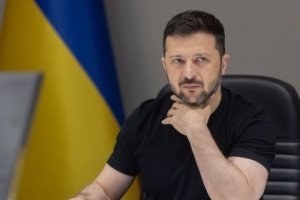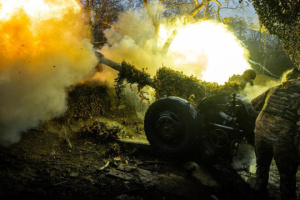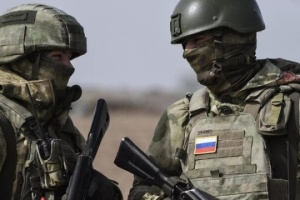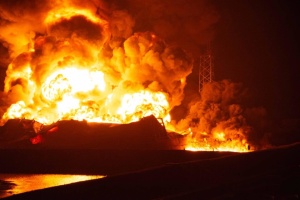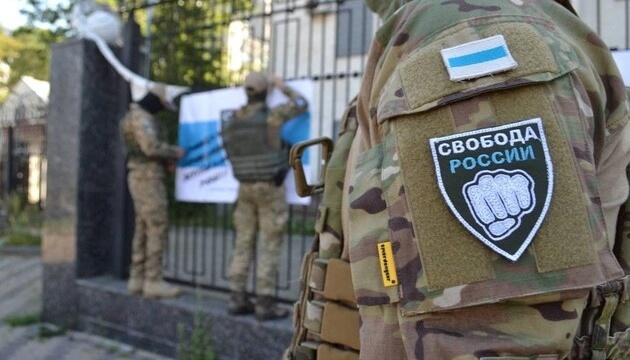
Dangerous for Putin: What is real goal of Belgorod operation?
Events in the Belgorod region continue to unfold. The counterterrorist operation regime introduced in the region lasted less than a day and was canceled. The local governor, Vyacheslav Gladkov, managed to state that "all the saboteurs were eliminated" and "the breakthrough of the subversive group was stopped." Meanwhile, the exact opposite information is coming from anti-Putin activists. The Russian Volunteer Corps and the Freedom of Russia Legion report in their Telegram channels that their operation to "liberate" Russia from the Kremlin dictatorship is not only ongoing, but that they have managed to defeat the Federal Security Service (FSB) forces and destroy the Russian army's motorized rifle company. However, it is still difficult to say what the reality is.
Meanwhile, the raids by Russian volunteers have already revealed many interesting things. For example, the fact that the Russian Federation has a leaky border and no cover for huge areas. It is also obvious that the purpose of all this action was not only to humiliate the Kremlin once again.
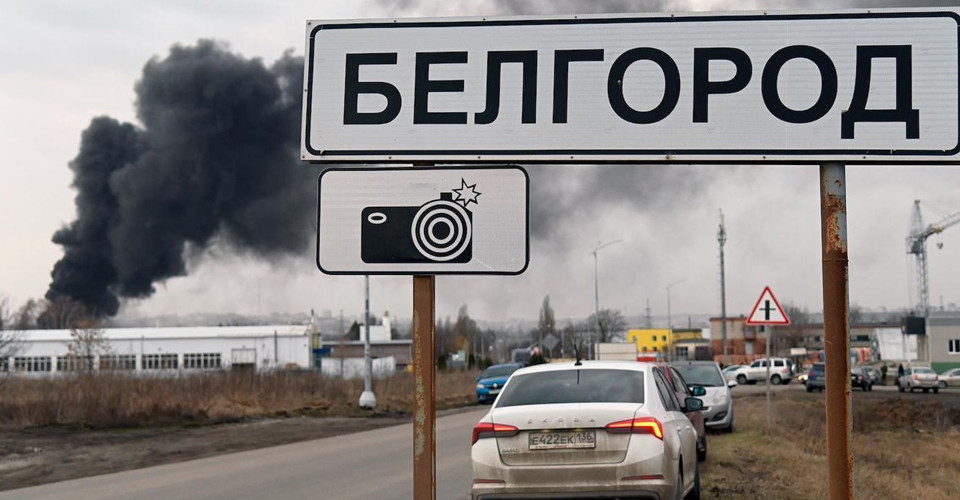
Belgorod raid: what is the goal and how can it end?
Oleksandr Kovalenko, a military and political observer of the Information Resistance group, said in a commentary to Ukrinform that the Russian Volunteer Corps and the Legion "Freedom of Russia" will definitely not attack Moscow. After all, they will not take Belgorod region either.
"In my opinion, everything will end up with them either leaving or demonstratively taking up positions - directly on the border, or perhaps in some settlements that are close to Ukraine," he says.
And such raids will continue.
"It's almost summer, and this is green. In the green season, guerrilla raids can happen frequently - until the fall. That is, for at least the next three months, the Russians will have nightmares, thus exerting moral and psychological pressure on them, and serious pressure at that. Finally, this is also a demonstration of how weak Russia really is," Mr. Kovalenko emphasized.
At the same time, Pavlo Lakiychuk, Head of Security Programs at the Center for Global Studies "Strategy XXI", believes that this is aimed at two goals.
"The first is military. It is to draw the enemy's forces away from the front to cover the border. The second, in my opinion, is the main goal - political. And not only to sow panic in the enemy's camp. Now we are playing on equal terms. Except that the Belarusian Democratic Republic (BNR) has not declared its accession. There is already a declaration of the Verkhovna Rada of Ukraine on granting independence to the peoples and countries enslaved by Moscow. So far, it is in the form of a draft," says the military expert.
He is complemented by Yevhen Savisko, who also assures that there is more than one goal here, there are several.
The first is combat reconnaissance.
"If we succeed, we will create a buffer zone between Ukraine and Russia, which will become a base for the deployment of military operations on the territory of the Russian Federation. If not, then to check the true state of defense of the border regions of Russia, and at the same time to divert the attention and forces of Russian militants from Ukraine," says the political scientist.
The second is to sow panic among the population, disorganize the work of local and central authorities of the Russian Federation, and demoralize the military and security forces.
The third is to give a public slap in the face to Putin and show the whole world the real state of Muscovy's defense capabilities.
"In fact, this is a veiled appeal to Japan, China, Georgia, Moldova, Poland, Germany - Russia is weak, you can demand the return of your occupied lands, and we will support you," Mr. Savisko is sure.
Meanwhile, political strategist Taras Zahorodniy argues that this way seven goals are achieved at once.
"Putin promised to build security and stability. So the first goal is to discredit the leadership of the army and the enemy state. The second goal is to create a zone of instability in Russia's border regions with the possibility of scaling it to further Russian territory. The third goal is to draw away some of the Russian army forces to cover the border. Goal four is to demoralize the Russian army. Goal five is to strike at the most inconvenient moment for them. That is, this is already an element of a counteroffensive. The sixth goal is to test the technology of attacking Russia, with the possibility of repeating it on the territory of Belarus. The seventh goal is to emphasize that the operation is coordinated with the West, as it is a repetition of what happened on March 2 in the Bryansk region. But this time, on a larger scale," the expert lists.
In general, he continues, all of this fits into the strategy of indirect actions, which is to break the enemy without engaging him directly.
Finally, political expert Kateryna Shtepa voiced her vision of the events in Belgorod. Firstly, the obvious proximity to the state border, any military action here will cause panic among the residents.
Secondly, the location of a tactical-level nuclear material storage facility in the area, which was a threat to Ukraine and Europe.
Thirdly, the need to clean up the areas from which Ukrainian territory, including Kharkiv, is regularly shelled.
"So there are enough reasons to demilitarize the Russian border regions. And the precedent of Russian citizens entering the territory of Russia from the territory of another state to fight against the Putin regime for another Russia is a serious challenge."
According to the expert, all the events and news around are centered on the topic of a possible civil war. The Kremlin is in real danger, as an internal open war is starting, and everyone in Russia is learning about it.
"The events have gained a lot of publicity, the population is fleeing in panic, and the Internet is revealing that there are forces fighting the regime. So yes, this is a very dangerous situation for Putin. Dozens of people are deliberately risking their lives in Russia so that more Russians can join this cause," emphasizes Kateryna Shtepa.
It is difficult to predict how it will end. However, it is clear that the myth about the invincibility of Russian borders has been debunked.
"And the first step towards the beginning of a civil war in Russia has been made," summarized Yevhen Savisko.
If only Mr. Savisko's words would fall on God's ears...
Meanwhile, representatives of the Russian Volunteer Corps (RDC) and Legion of Freedom of Russia (LSR) report in their Telegram channels that they "continue to work on the liberation of Russia from the Putin regime.»
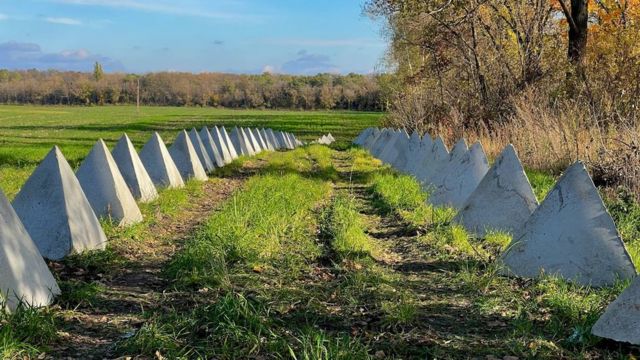
And the border is leaky: another large-scale humiliation of Russia
Among other things, the RDC and Legion demonstrated that Russia does not have a secure border today.
"Even to close the border with Ukraine, which should definitely be closely monitored, the Russian occupiers lack the resources. That is, there are many "white spots" and it is possible to enter the enemy's territory without hindrance," emphasizes Oleksandr Kovalenko.
The expert cites several non-trivial calculations to understand why the Russian border is a sieve. In the Kursk, Bryansk and Belgorod regions of Russia, up to 25 conditional battalion-tactical groups, totaling about 17,000 people, are concentrated on the border with Ukraine.
"These Battalion tactical groups (BTG) are stretched along the border and are not concentrated in one location - a sector. The total equipment of these BTGs in terms of combat-ready equipment makes them conditional, as it practically does not correspond to the standard equipment. In particular, these units are armed with: tanks - about 100 units instead of the standard 275; armored personnel carriers - a little more than 360 instead of the standard 825; cannon artillery - 200 instead of the standard 300; MLRS - 30 instead of the standard 300," lists the observer of the Information Resistance group.
As you can see, the standard equipment of these BTGs sometimes does not reach 50% or even more.
The next point is the length of the border. Kursk, Bryansk, Belgorod regions are more than 700 km of the border with Ukraine, and 25 BTGs are physically unable to cover this front. According to Mr. Kovalenko, the functionality of a standard BTG is to defend 4-7 km, while taking into account the current quality of the Russian occupation troops, it is 1 BTG per 1-2 km of the front.
"That is, 25 BTGs can control a maximum of 25 to 50 km of the front, which roughly corresponds to the front of the Legion and RDC operation that we observe in the Belgorod region. But with such a concentration of forces, who will cover the rest of the border?" the military analyst speculates. - "All the occupiers' forces that are now concentrated along the border are not enough to completely close the border from pillar to post and control this area 24/7."
And here the question arises: if Russia's border with Ukraine, which has been demonized in the Kremlin for years, is so porous, what is the situation on the border with China, Kazakhstan, and Mongolia?
"Everyone has seen these days that Russia does not control its border. Absolutely everyone in the world. This is another large-scale humiliation of Russia. However, it is one thing when your weakness is seen by NATO, which strictly adheres to the charter, and quite another when your "friends" like China see it," Oleksandr Kovalenko emphasized.

Ukraine has nothing to do with the events in the Belgorod region, at least not directly
"Everything is done exclusively by Russian citizens, who often do not even hide their faces. That is, everyone can be identified and make sure that they are not Ukrainians, but Russians as part of volunteer groups," says Oleksandr Kovalenko.
Pavlo Lakiychuk said something else about this: "The military aggression in Ukraine has opened our eyes to the existing regime in Russia itself. To oppose the Stalinist-style repressive machine carefully cultivated by Moscow from within is an extremely risky business - those who disagree emigrate, many continue to fight for their free homeland from abroad: "Solidarity, Free Russia, associates of Navalny, Kasparov, Khodorkovsky. Some see the Russia of the future as a "democratic empire," others as a "federation of democracies," and still others as separate independent (national) states - free Ichkeria, Ingria, Idel-Ural, Chuvashia, Belgorod, and Voronezh republics. For Ukraine, all these movements and proto-states are partners and fellow travelers. We are interested in having democratic nation-states on our borders after the war, not an aggressive totalitarian monster. And, of course, Ukraine supports and will continue to support them. Morally and politically."
And if someone in today's Russia is ready to take up arms to defend democracy from the Kremlin's revanchists, they are ready to join their ranks. According to Mr. Lakiychuk, this is the case with the Legion "Freedom of Russia" and the Belarusian regiment named after Konstanty Kalinowski.
"Obviously, the Armed Forces of Ukraine interact with their fellow "legionnaires" on the battlefield and provide them with the necessary assistance during their raids on their territory," said the head of security programs at the Center for Global Studies "Strategy XXI".
He reminds how since 2014, the Kremlin has been shaping a "new reality" for the world: "war sales", "little green men - polite people", pseudo-referendums and pseudo-republics...
"We are returning this reality to them - independent nation-states on the territory of the empire. Yes, so far they exist mainly in the information space. But it will continue... So does Ukraine have the right to support the sprouts of national liberation movements in the Russian totalitarian empire? After all the horror we have experienced from the West, yes, it does. Moreover, I believe that this is our moral duty," summarized Pavlo Lakiychuk.
Myroslav Liskovych, Kyiv
For reference...
What is known about the RDC and Svoboda Rossii [Legion "Freedom of Russia"]?
Both military units are part of the International Legion of the TrO and were created in 2022. The Russian Volunteer Corps began operating in August, and Svoboda Rossii earlier, in March.
The Freedom of Russia Legion was formed from Russian prisoners of war who decided to fight on the Ukrainian side and Belarusians who did not participate in regular military formations. According to the SBU, on February 27, almost immediately after the start of the full-scale invasion, about a hundred Russian soldiers defected to Ukraine to protect it "from real fascists."
Later, volunteers began to join the Freedom of Russia, but currently the legion does not recruit prisoners of war.
"The third battalion is already being formed [the battalion is 400 to 800 people], which will go to the front after training and fight side by side with us. There are those who were caught in the wave of mobilization and then went over to the side of Ukraine," said one of the Freedom of Russia fighters with the call sign Caesar.
The Legion uses chevrons with a white, blue and white flag instead of the official Russian flag. Members of the Freedom of Russia have repeatedly called on fellow citizens to join the ranks of the unit to save their country "from humiliation and ruin."
The Russian Volunteer Corps (RDC) consists of Russian emigrants who, before the Russian invasion, lived in Ukraine and other European countries. The corps began recruiting additional volunteers in November 2022, after a call from the Civic Council [a Warsaw-based political association consisting of Russian oppositionists from different regions], but it began operating in late summer 2022. At the same time, the RDC was assigned to the 1st Company of the 98th Battalion of the Azov Tanker Company in the Zaporizhzhia-Donetsk sector.
Despite the high level of media coverage, nothing is known about the number of soldiers in the corps. However, military experts believe that the size of the Russian RDC is close to two companies, which is 180 to 200 people.
And something else important. It is quite logical that many Ukrainians may wonder: what are the guarantees that all these people will not turn out to be "sent Cossacks" and agents of the special services, given that people of completely different professions are fighting in the RDC, from actors to escaped convicts, and there are also former employees of the Russian Ministry of Internal Affairs and military personnel who have served in the Russian Federation for years? Actually, there are no guarantees. But it is reported that before being accepted into the legion/corps, Russians are thoroughly checked by Ukrainian special services, including a polygraph, questionnaires, a psychological portrait of each potential fighter, and so on.

